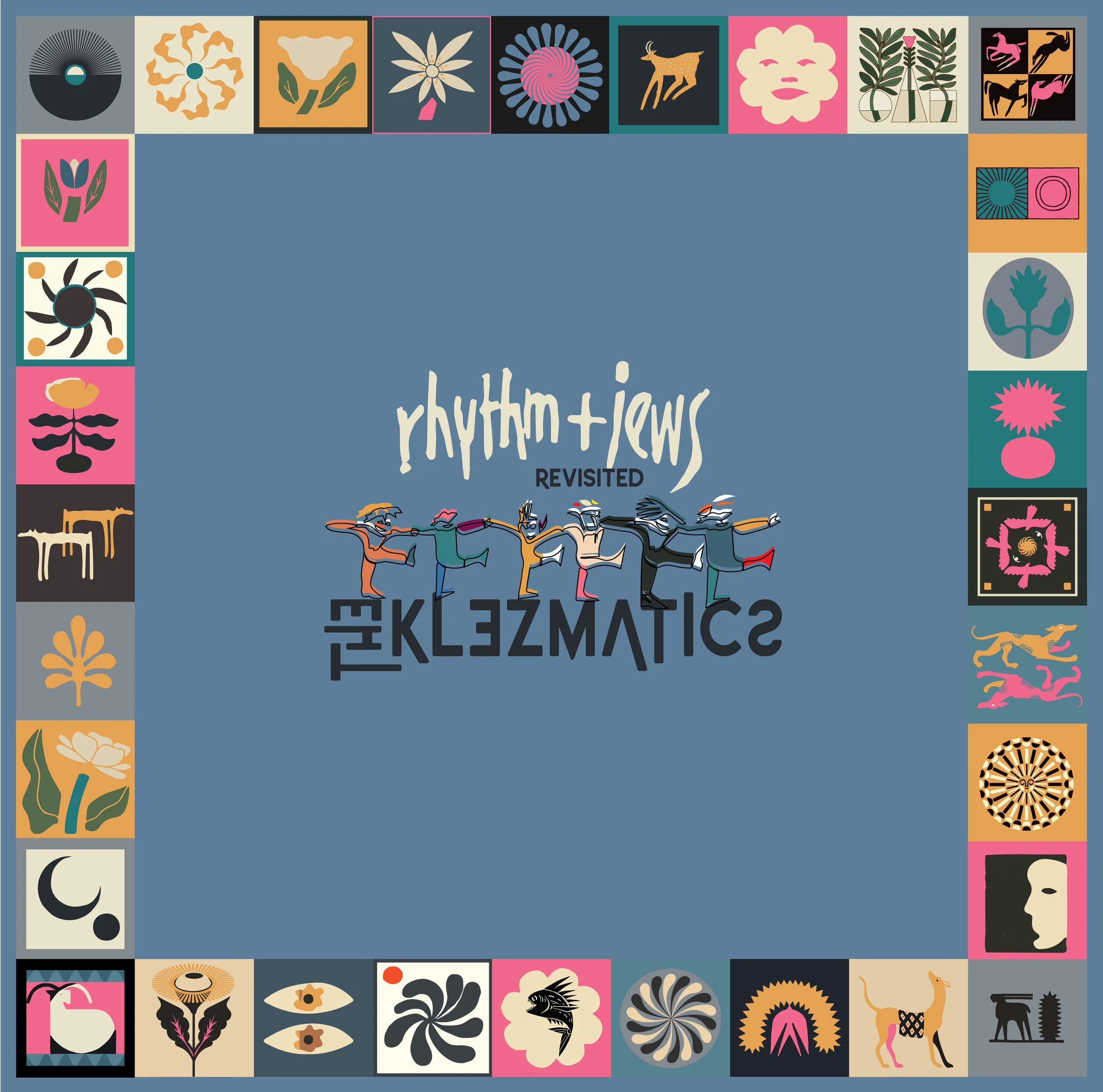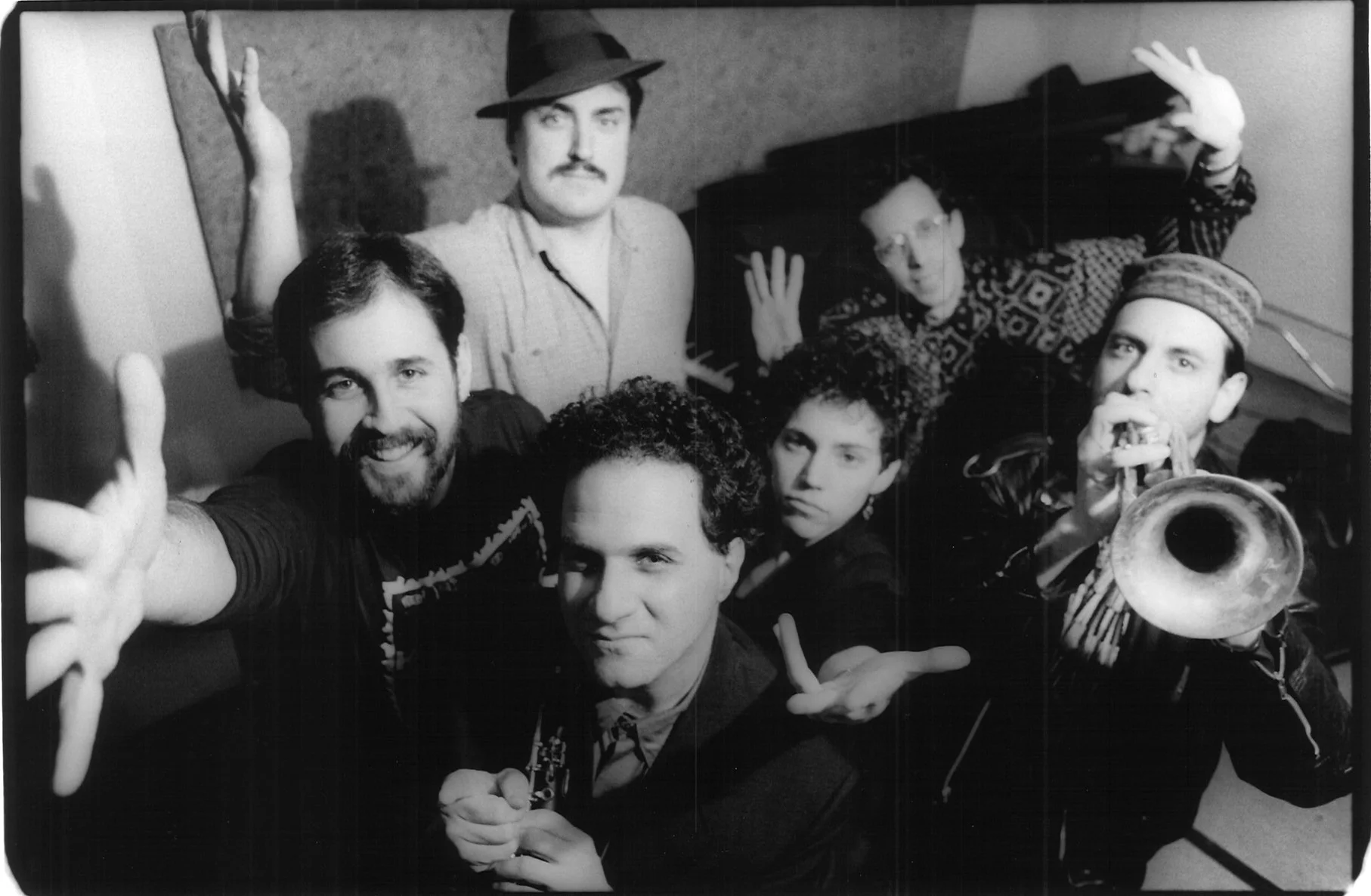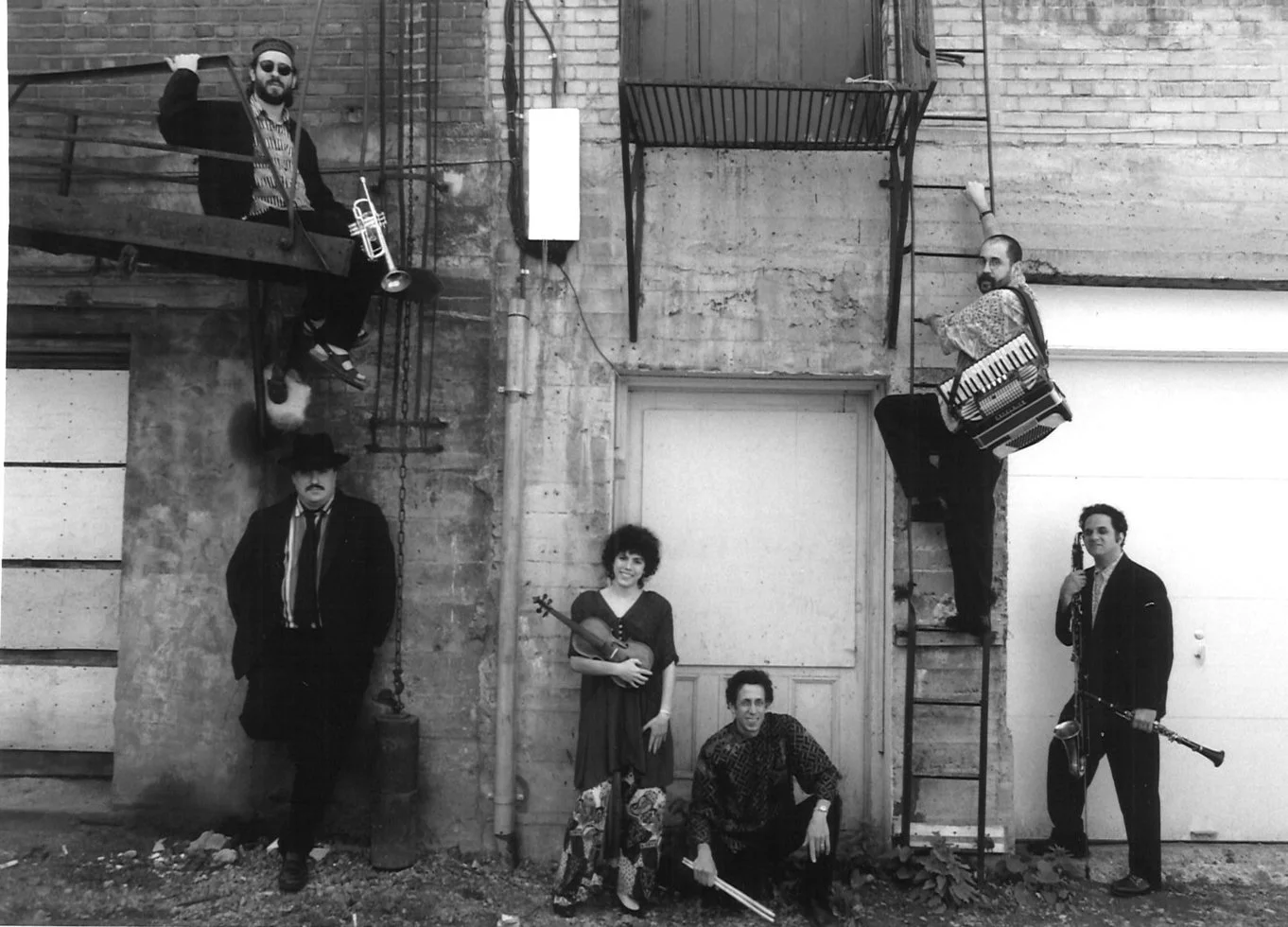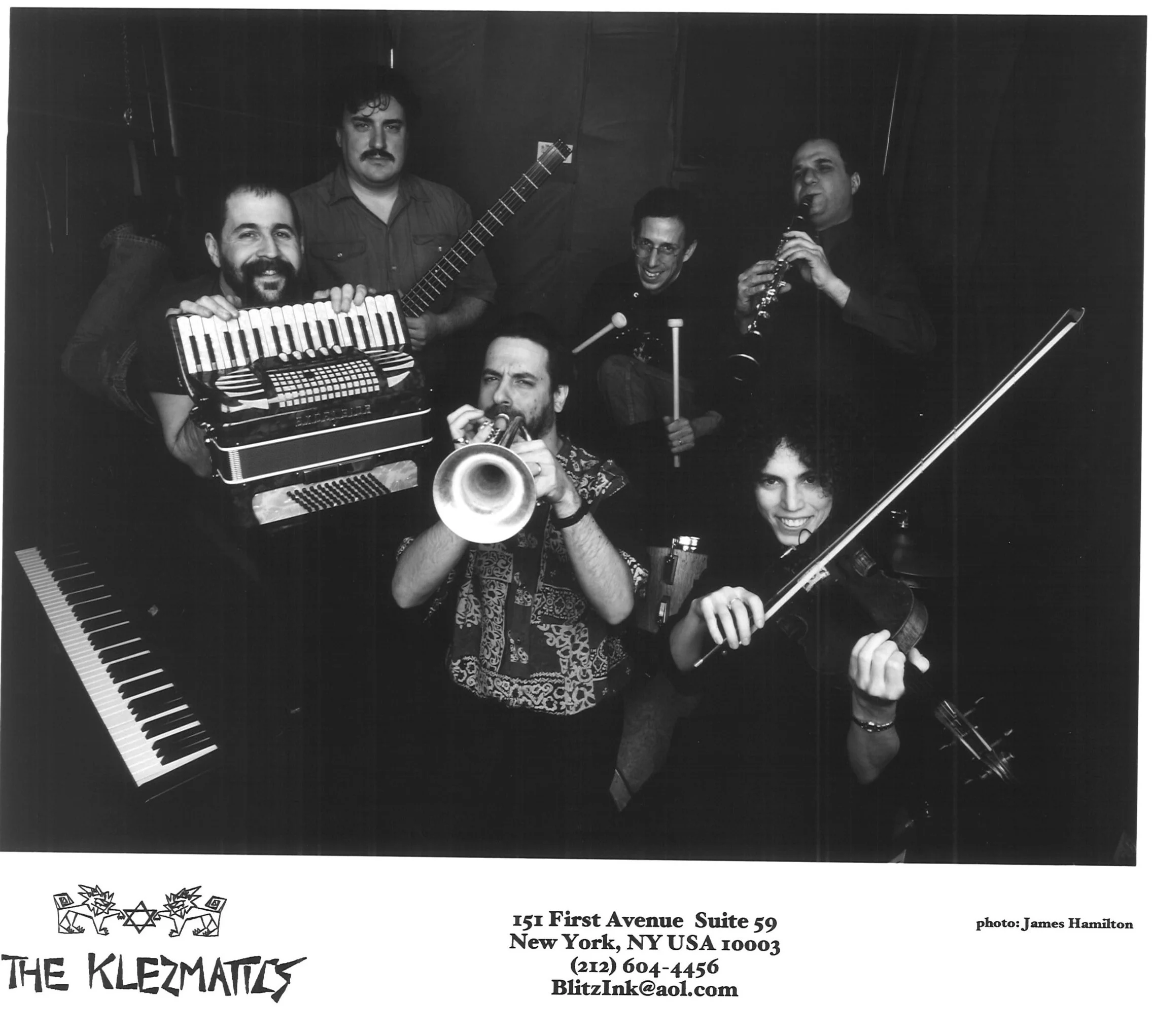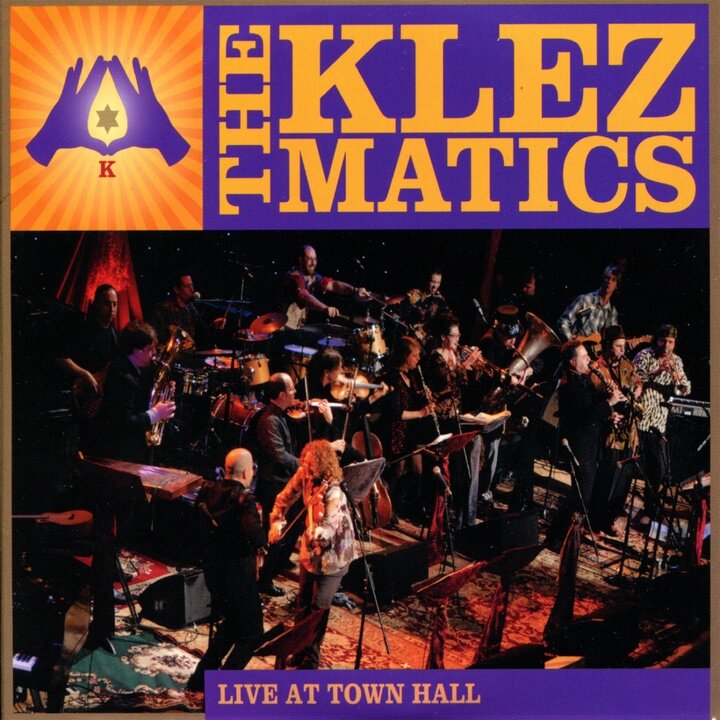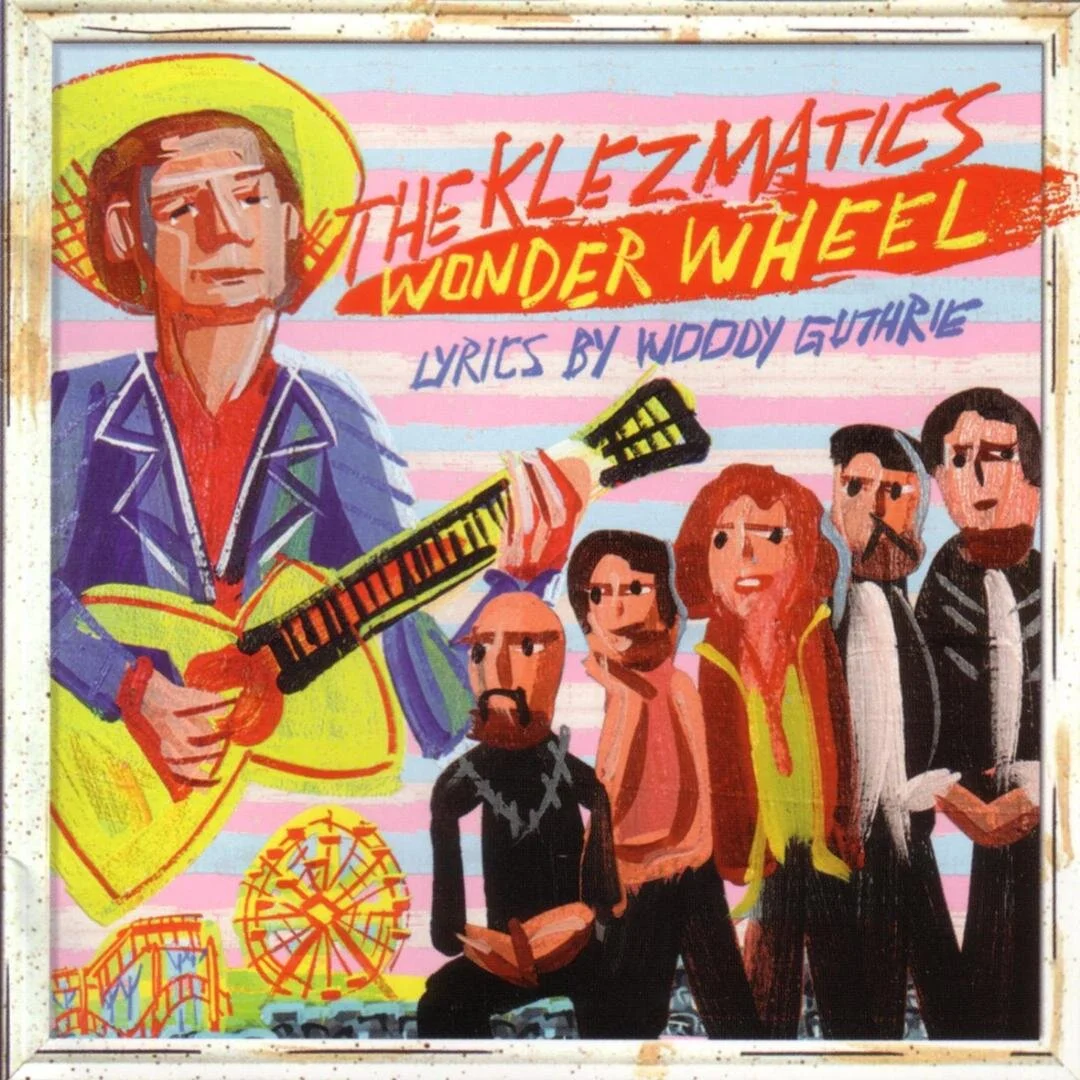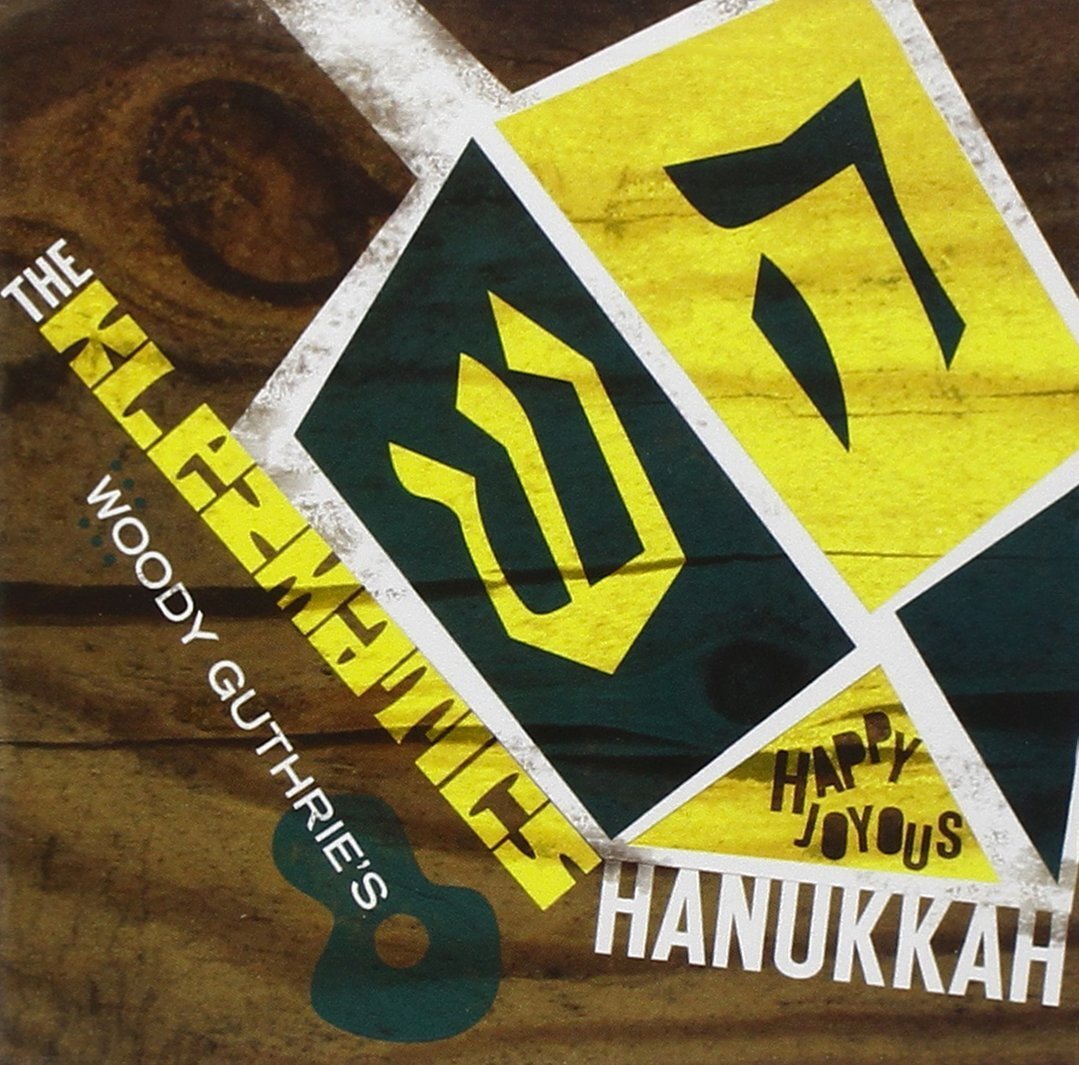Rhythm & Jews is Back!
Digital Release
24th October
〰️
Physical Release
7th November
〰️
Digital Release 24th October 〰️ Physical Release 7th November 〰️
1991 Rhythm & Jews: Revisited
The Klezmatics are delighted to announce the re-issue of their seminal 1991 album, “Rhythm + Jews: Revisited” on Eco-Friendly limited-edition.
Originally released in the pre-digital era, the Klezmatics’ groundbreaking album, “Rhythm and Jews” has been out of print for years and never made its way to modern platforms—until now. The record has been cleaned up, remastered and sounds better than ever.
This is the album that put the Klezmatics on the map with iconic songs as Fun Tashlikh, Di Sapozhkelekh, NY Psycho Freylekhs, and Shnirele Perele. The re-issue features alternative versions of the album’s iconic tracks, unearthed from recently discovered master files.
This is the first in a series of reissues celebrating the band's 40th anniversary in late 2025 and early 2026. For those who have previously enjoyed “Rhythm + Jews” or are longtime aficionados of The Klezmatics, this special edition offers fresh nuances and details previously unheard. Newcomers to the band or those yet to experience this album are in for a genuine treat of a significant piece of klezmer history.
Klezmer music has played a crucial role in the preservation of the Yiddish language and culture and has contributed in innumerable ways to the language of global music.
.
Memories
“The Klezmatics extend the nonpurist impulses of klezmer, the East European music that came to the United States with Jewish immigrants and changed at every stop. For the Klezmatics, touches of jazz and rock are natural additions to klezmer, which has always featured improvisation and dance rhythms… and its arrangements borrow various gambits, including stop-time breaks and modernist jazz harmonies. Its current album is called "Rhythm and Jews"
The New York Times
“Of the modern klezmer bands, the Klezmatics are probably the most innovative, though they began as strict traditionalists. Led by arranger-composer Frank London (who has worked with the likes of David Byrne, LL Cool J, and They Might Be Giants), their albums Rhythm and Jews and Jews with Horns echo the past but hint at a future in which klezmer begins to absorb everything from punk to rap.”
Dallas Observer
The Klezmatics take from jazz what it once borrowed from gypsy music; they draw their energy from rock music and their scales from Arabic music. The result: likably over-the-top, respectful of tradition, and yet refreshingly rebellious
Berliner Zeitung
Spotlight on Fun Tashlikh
What is special about the opening track “Fun Tashlikh”?
Lorin Sklamberg: “I think that when you hear Fun Tashlikh, you really hear this is the Klezmatics. Without a doubt, the way that it starts with this wailing bass clarinet and that it utilizes David Krakauer's particular talent. Also, his musical identity with his connection to Sidney Bechet and his chops as a classical and world music player, and the fact that we invited the Nubian master drummer Mahmoud Fadl to join our recording sessions.
The record was also a departure from what had existed for contemporary Yiddish music at the time. It was the first record that tried to bring a modern sensibility to the way that you recorded music. Things were thought of in terms of putting a recording out, the recording being separate from a live performance. There are elements on this that aren't things you would necessarily do live. You would use reverb and delay effects and have some sound effects or a vocal call and response thing between me and Frank London playing trumpet on it. All of these things are a calling card for the band.
When you hear the record as a whole, Fun Tashlikh is a big statement. Here we are, This is The Klezmatics, This is what we're like in 1991. I think it's one of our most beloved tracks, but also one of our most identifiably us. It says so much about the band and who we were as musicians when the record was made.”
A Closer look to Honikzaft
What is the inspiration and circumstances behind writing Honikzaft?
LS:
It was Frank London's idea to write this song using the text from the Song of Songs, but reimagining it as a homoerotic song. The Song of Songs is famously erotic poetry that has often been interpreted as being about our relationship with God. However, like many Jewish texts, it can be interpreted in various ways. Many people take it at face value as a series of love songs. We looked to the famous translation of the Jewish Bible by the poet Yehoash, and I adapted some of the verses from the Song of Songs for Frank’s composition.
Growing up with a conservative Jewish background, I was familiar with many of these texts from early Israeli folk songs, which often drew on biblical poetry. After moving to New York in 1983, I found ways to use the knowledge I had acquired as a kid and young adult. This song also held personal resonance for me, making it a very special project. It was part of how we responded to Krzysztof Burkowski’s idea that the band should strive to be true to ourselves and bring our whole selves into the music. This song is one way we achieved that.
Frank Klaffs:
would you say Honikzaft is recognized as a special song by that community in the context of The Klezmatics’ work?
LS:
I moved to New York primarily because I wanted to be in a place with a stronger Jewish identity than Los Angeles, or the suburb of Los Angeles where I grew up. New York, being an older city, has a more grounded and focused queer presence. When I was a cantor at the gay synagogue in Los Angeles, I felt like everything was in small, isolated pockets because Los Angeles is so sprawling. In New York, everything is much more concentrated.
That was certainly an inspiration for me, writing for my communities—plural, because I’m part of many intersecting communities: the Jewish community, the Yiddishist community, the queer community, and the organized Jewish religious community. These circles intersect in various ways. This song was an expression of many parts of the band members’ identities. Rhythm + Jews is a very personal statement from the band at that time, a step forward that showed where we were headed.
Unveiling NY Psycho Freylekhs: A short review about the second single
What inspired the title 'New York Psycho Freylekhs' for the track on your album Rhythm + Jews, and what does it reflect about the band’s identity or the song’s vibe?
“New York Psycho Freylekhs is really just The Klezmatics playing good klezmer party music. Freylekhs, which means happy or joyful, is a type of Jewish dance. At the time, we were criticized—or perhaps complimented—as being a bunch of crazy, gay New York Jews, "New York Psycho Freylekhs" people. We said, "Great, you're trying to insult us, but we're going to embrace this because we have so much love and energy as crazy New York gay Jewish klezmer musicians." That's the story of why we called it New York Psycho Freylekhs.”
Frank London
In the annals of contemporary klezmer revivalism, few tracks capture the effervescent alchemy of tradition and innovation quite like "NY Psycho Freylekhs," the propulsive opener—technically the second cut—on The Klezmatics' seminal 1993 release Rhythm + Jews. This Flying Fish outing, a cornerstone of American world music, fuses the raw, emotive contours of Eastern European Jewish folk with the syncopated swagger of jazz-inflected rhythms, Latin undercurrents, and a broader global tapestry that renders klezmer not as relic, but as a living, breathing organism. Hailing from the United States, the ensemble—anchored by clarinetist David Krakauer, trumpeter Frank London, violinist Alicia Svigals, and vocalist/accordionist Lorin Sklamberg—channels the ghosts of 1920s pioneers like Naftule Brandwein into a sonic whirlwind that demands both contemplation and unbridled movement.
At its core, "NY Psycho Freylekhs" is a freylekhs in the truest sense: a buoyant dance form evoking joyous abandon, its title a cheeky nod to the neurotic pulse of New York life reimagined through hassidic melody lines and American blue notes. The arrangement erupts with raucous enthusiasm, propelled by a rhythm section of bass and drums that injects rhythmic punch and percussive flair, while horns—led by London's cornet flourishes—and saxophone-like clarinet flourishes weave through strings and accordion in a tapestry of interplay. Largely instrumental, with fleeting male vocal interjections that add a layer of narrative intimacy, the track eschews overt lyricism for thematic undercurrents of communal ritual and fleeting romance, allowing the music itself to narrate tales of resilience and revelry.
What elevates this piece to transcendent heights is its mood: a kaleidoscope of bright confidence and playful positivity, laced with upbeat fervor that feels both fun and reflective, happy yet romantically wistful. Listeners are swept into a vortex of fast-fingered virtuosity—Krakauer's clarinet dancing like a dervish over Licht's inexorable drum drive—evoking the feverish energy of a Lower East Side wedding hall circa 1993, where klezmer's wailing joy collides with jazz's improvisational spark and Latin percussion's subtle sway. It's pure Lebensfreude, a sonic manifesto that reaffirms The Klezmatics' prowess in bridging worlds, turning a simple dance tune into a manifesto for cultural hybridity.
Three decades on, "NY Psycho Freylekhs" remains a clarion call for those seeking the klezmer idiom's boundless potential: confident, upbeat, and unapologetically alive. In an era of fragmented genres, it stands as a beacon of unfiltered exuberance, inviting us to twirl amid the chaos.
Apikorsim (Heretics)
Live at Town Hall
Tuml = Lebn
Wonder Wheel
Woody Guthrie’s Happy Joyous Hanukkah
Possessed
Rise up! Shteyt Oyf!
Brother Moses Smote the Water
The Well
Jews With Horns
Rhythm + Jews
Shvaygn = Toyt
Letters To Afar
The Klezmatics Release New Holiday EP: Woody Guthrie’s Happier Joyous Hanukkah


